Joséphine de Beauharnais: Patron of the Arts
Joséphine de Beauharnais was born in Martinique as Marie Josèphe Rose Tascher de La Pagerie. She evolved into the sophisticated and cultured...
Maya M. Tola 20 May 2024
Willem II ruled the Netherlands from 1840 to 1849. In modern terms he would be considered a bisexual man, as he had relationships with both women and men. His portraits are the epitome of masculinity in its most traditional form. After all, these images were carefully constructed to depict power, not reality. He is portrayed on horseback, wearing a military uniform, surrounded by regal symbols, and with his wife and children. In reality, political adversaries took advantage of his sexual orientation to blackmail him into passing reforms in 1848.
Willem Frederik George Lodewijk (1792-1849) became king of the Netherlands in 1840. He was called Willem II after his father. Unlike most successions, his father abdicated due to his unpopularity and inability to deal with the social changes happening in Europe at the time. Additionally, he held the titles of Grand Duke of Luxembourg and Duke of Limburg. The portrait below was made just one year before his ascension to the throne. Jan Kruseman depicted him with his dog, who looks at his master quite adoringly. The natural landscape is a feature of the Romanticism movement of the 19th century. According to the Rijksmuseum, the dunes are characteristic of Dutch painting at the time.
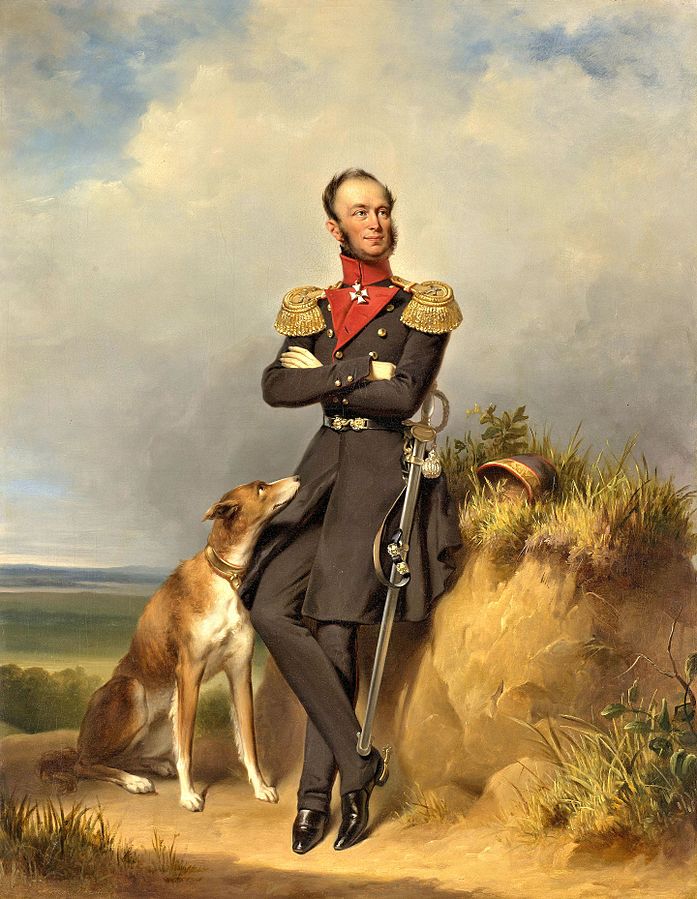
Jan Adam Kruseman, William II (1792-1849), King of the Netherlands, 1839, Rijksmuseum, Amsterdam, Netherlands.
Willem II and his family went into exile in England when he was only two years old. While there he studied at Oxford University and joined the British Army. He participated in several military events such as the Battle of Waterloo. In the following painting, Nicolaas Pieneman places Willem II at the center of the scene. He stands up as a group of officers on horseback surrounds him. The Ten Days Campaign refers to a conflict between the Netherlands and Belgium in the 1830s. The whiteness of the horse helps draw the viewer’s attention to the prince.
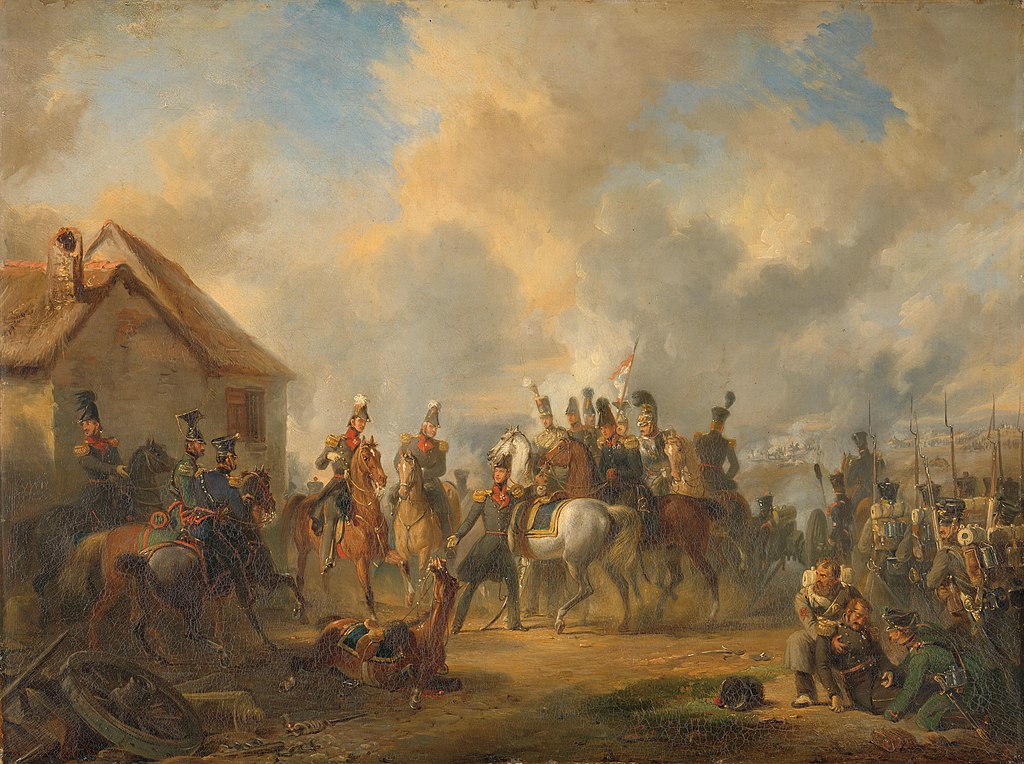
Nicolaas Pieneman, The Battle of Bautersem during the Ten Days’ Campaign, 1833, Rijksmuseum, Amsterdam, Netherlands.
In this next piece we see Willem II in a more heroic pose. He proudly sits on horseback while a battle occurs in the romantic background. When looking at this painting one can understand why the British called him “slender Billy.” A portrait of this sort aims to reflect the bravery and leadership of the sitter. It is a beautiful piece of propaganda.
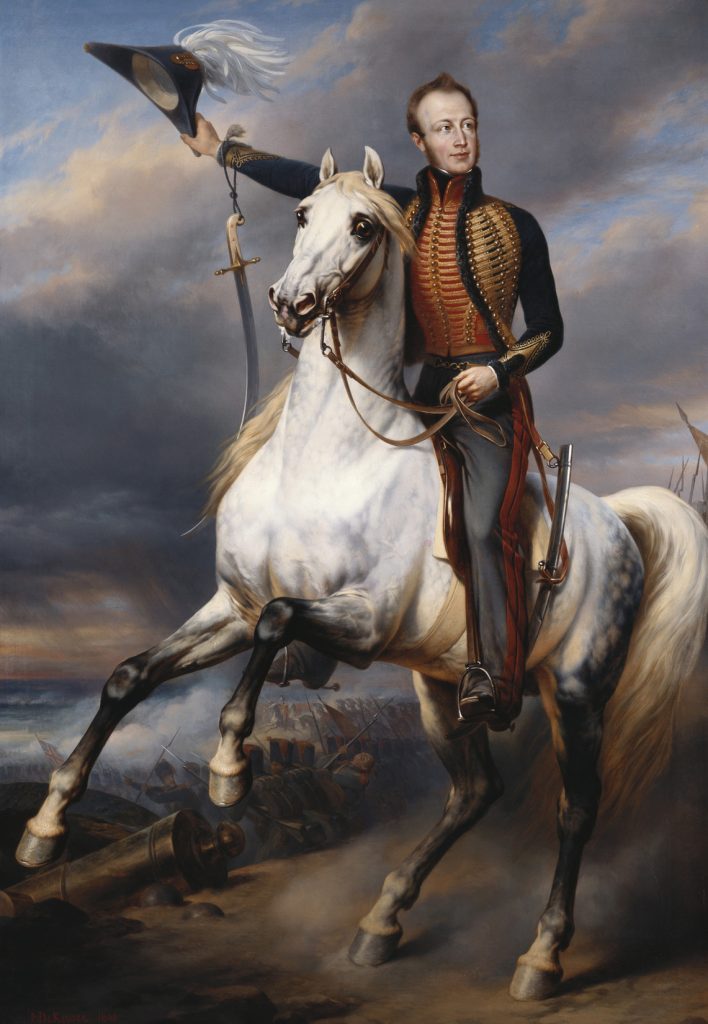
Nicaise de Keyser, William II (1792-1849), King of the Netherlands, when Prince of Orange, 1846, Royal Collection, London, UK.
In times when marriage had very little to do with love and a lot with political power, it was impossible to determine a person’s orientation through it. Like any royal, Willem II was expected to get married and procreate. He had already grown up in the United Kingdom, therefore a marriage to a British woman was only logical. His first engagement was to Charlotte, Princess of Wales. However, it failed after she and her mother opposed the arrangement. In 1816, he married Anna Pavlovna, Grand Duchess of Russia and sister to the Tsar Alexander I.
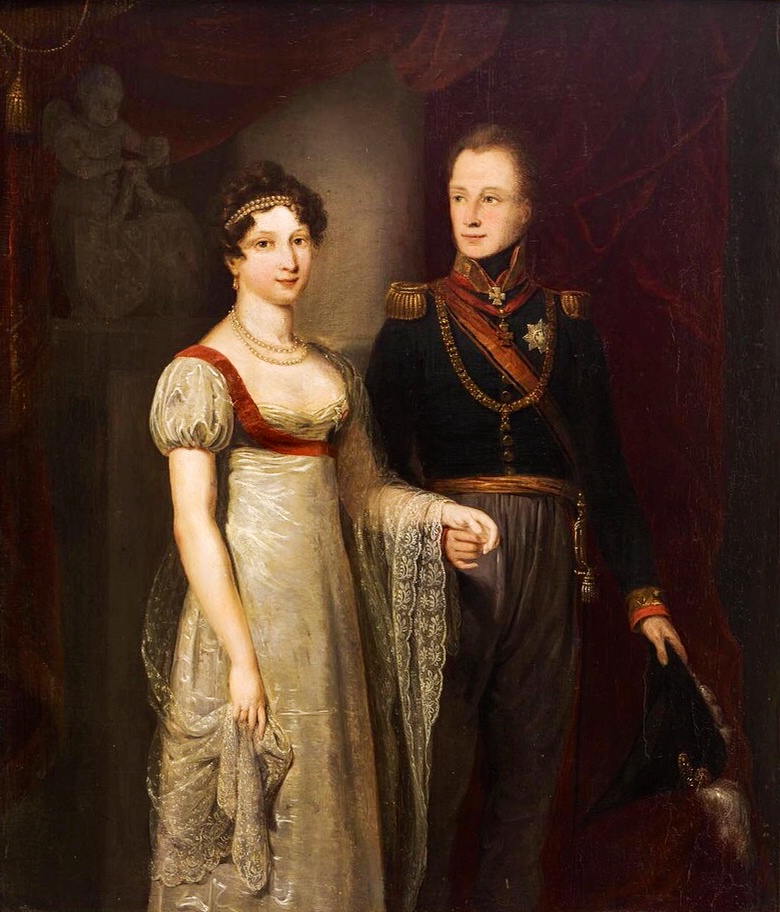
Jan Willem Pieneman, Portrait of Prince William II of the Netherlands and his Wife Anna Pavlovna, 1816. Wikimedia Commons (public domain).
Their union was not a love match, but they managed to have five children and we can see the family in the portrait below. Tragically, their fourth child, William Alexander, died mere months after he was born and consequently, we only see four children in Van der Hulst’s painting. This portrait reaffirmed Willem II’s role as the head of a family, as well as pointing at the succession line. On the far left, the future king Willem III leans on his brother’s chair.
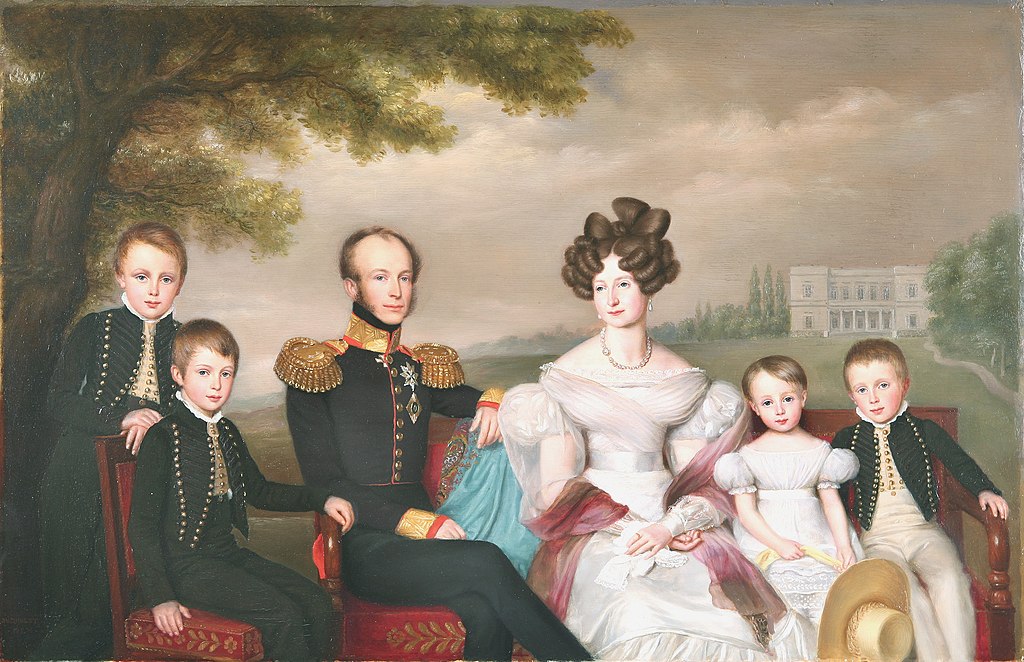
Jan Baptist van der Hulst, King William II with his Family, 1832, Royal Collections of the Netherlands, The Hague, Netherlands.
Despite Willem II’s marriage and children, his identity was well-known by other political and social actors. There were rumors of his extramarital encounters with both men and women, which put him in a vulnerable position. As early as 1819, he was blackmailed by Cornelis Felix van Maanen, Minister of Justice during his father’s reign.
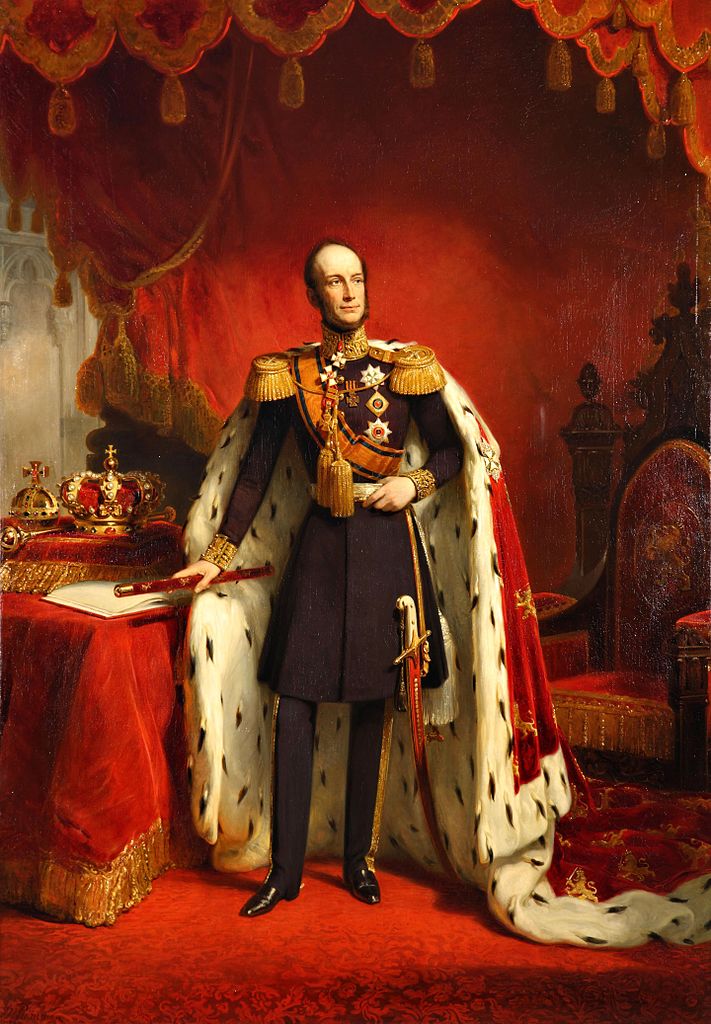
Nicolaas Pieneman, Portrait of William II of Orange, King of the Netherlands, 1849, Hermitage Museum, Saint Petersburg, Russia.
Most importantly, Willem II had to deal with the 1848 revolutions, whose outcome in the Netherlands was closely related to his sexuality. Once again, the main theory is that political rivals blackmailed him, forcing him to accept reforms to the political system. With them, the power of the monarch decreased while the parliament gained more influence. Additionally, the Netherlands had its first constitution. Even the king admitted the rapidity of his change of mind, which led many to believe it was the result of coercion.
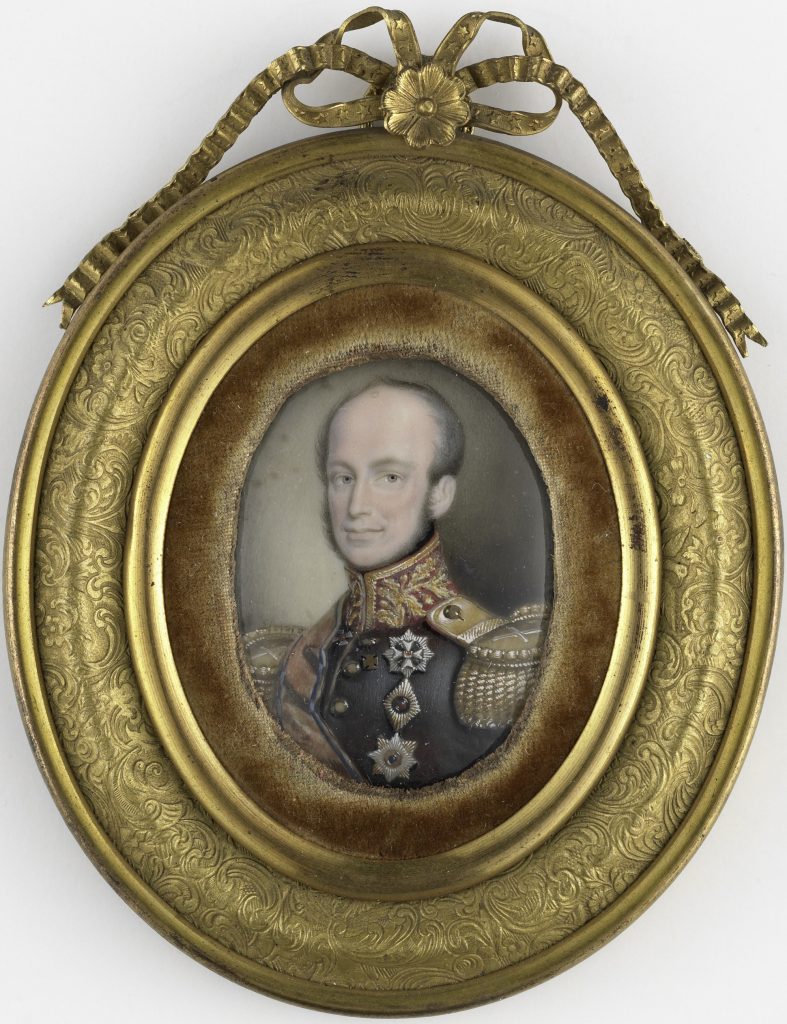
Louis Henri de Fontenay, Willem II (1792-1849), King of the Netherlands, c. 1840, Rijksmuseum, Amsterdam, Netherlands.
One would never guess any of this from his portraits. These are political instruments of the crown, propaganda aimed at projecting a sense of power and masculinity in the patriarchal, heteronormative society of the 19th century.
Fortunately, today we can talk more openly about Willem II and his bisexuality. His case also helps make visible this orientation that even within the LGTBQ+ community is subject to discrimination and prejudices. In 2019, artist B. Murky placed a staircase to invite people to climb up and kiss the King’s statue in Limburg, Netherlands. This was part of a three-day festival Kaapstad, Art in Public Space Festival. The statue is still there but the installation was removed after the festival.

B. Murky, The Royal Kiss, 2019, Tilburg, Netherlands. Kaapstad.
King Willem II (1792-1849), Royal House of The Netherlands.
William II, Britannica.
DailyArt Magazine needs your support. Every contribution, however big or small, is very valuable for our future. Thanks to it, we will be able to sustain and grow the Magazine. Thank you for your help!